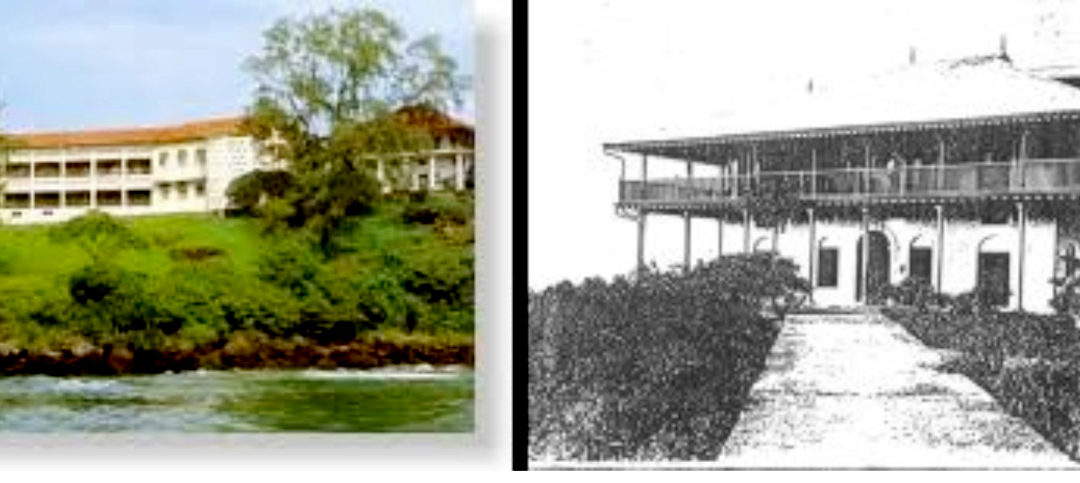Mombasa Hospital’s Early Days
When the Imperial British East Africa Company began to trade in East Africa in the early 1890s, there was a need for a hospital for Europeans, prone to fall sick so easily in a country with an unfamiliar climate, where malaria was still imperfectly understood. IBEAC appointed Dr WH Macdonald, registered as a medical doctor in Edinburgh in 1889, to be Mombasa’s doctor. Then the Company received a donation to build a church and hospital. The Roman Catholic Holy Ghost Fathers were given the running of it, under the supervision of the Chief Medical Officer, Dr WH Macdonald. In the same year the British Government took over the administration of the East Africa Protectorate, and with it the management of the hospital.
Macdonald now worked for the government and had as his assistants three sisters of the Order of St Joseph de Cluny, from France. They were Mother Auxanne Maugee, from Martinique, who was in charge, Sister Benilda Houston from Donegal in Ireland, and Sister James Hearty from Scotland. This mixed band manned the hospital until 1901, when they handed over to lay sisters arriving from England on 1 November. Mother Auxanne died in France in 1902. A plaque in her memory was placed in the Holy Ghost Cathedral in Mombasa and later moved to the hospital. The other two sisters went to the Seychelles.
Macdonald was not thought highly of as a doctor. The High Commissioner Eliot said, ‘I cannot conscientiously recommend any scheme which does not include the removal of Dr Macdonald from the post of PMO.’ A missionary doctor at Kibwezi, RA Moffat (David Livingstone’s father-in-law was his grandfather), said of him: ‘Not a man I admire at all, but still, he is friendly and kind which covers a multitude of sins.’ Macdonald was forced to resign in 1907 because he was ‘no longer qualified for the post’.

Mombasa Hospital today, and as it was earlier:
In 1912 a provision for maternity care was needed for the increasing number of new colonists, so a nursing home was established overlooking Mombasa golf course. It was often used as an overflow from the main hospital. Electricity was installed in the main hospital in 1910 and in 1921 the name was changed to Mombasa European Hospital. It had twelve beds and four nurses, under the supervision of Dr Norman Jewell. There were pleasant rooms on the ground floor around a central room where dressings were done and a doctor’s consulting room which doubled as an office. The wards were all on the first floor and opened out onto a wide veranda surrounding the building. Jewell had to perform operations on this veranda – a hazardous undertaking because the shore winds blew away the chloroform. In 1925 an operating theatre was built, and in 1927 facilities were improved by the introduction of a refrigerator. Then in 1935 there was a further boon – the introduction of piped hot water. Even an ambulance was acquired in 1940.
The Second World War put an end to plans for improvement, and there was a blow in 1944 when the government decided it could no longer afford to maintain a hospital for Europeans: it would have to be privately funded. Fortunately ten years earlier one Sam Cohen had given £17,000 (now grown to £26,000) to the European Hospital Fund. A tax was levied on all Europeans over eighteen years old, and out of this was paid to the European Hospital Association a sum dependent on bed occupancy. The Mombasa Hospital Association, with Kenneth Adcock as its chairman, assumed responsibility for the hospital in 1947. Sam Cohen’s legacy was combined with proceeds from the sale of the maternity home, and the government granted a further £50,000. The architect Dorothy Hughes designed the buildings and the new hospital with seventy beds was opened in 1950, with Jane Walden as Matron.
A maternity ward was added in 1960, with a gift from Katherine Bibby, from the British shipping family. The hospital was renamed the Katherine Bibby Hospital. When Kenya’s independence arrived on 12 December 1963, all racial barriers to bed occupancy were swept away and the hospital became known as the Mombasa Hospital.


Recent Comments